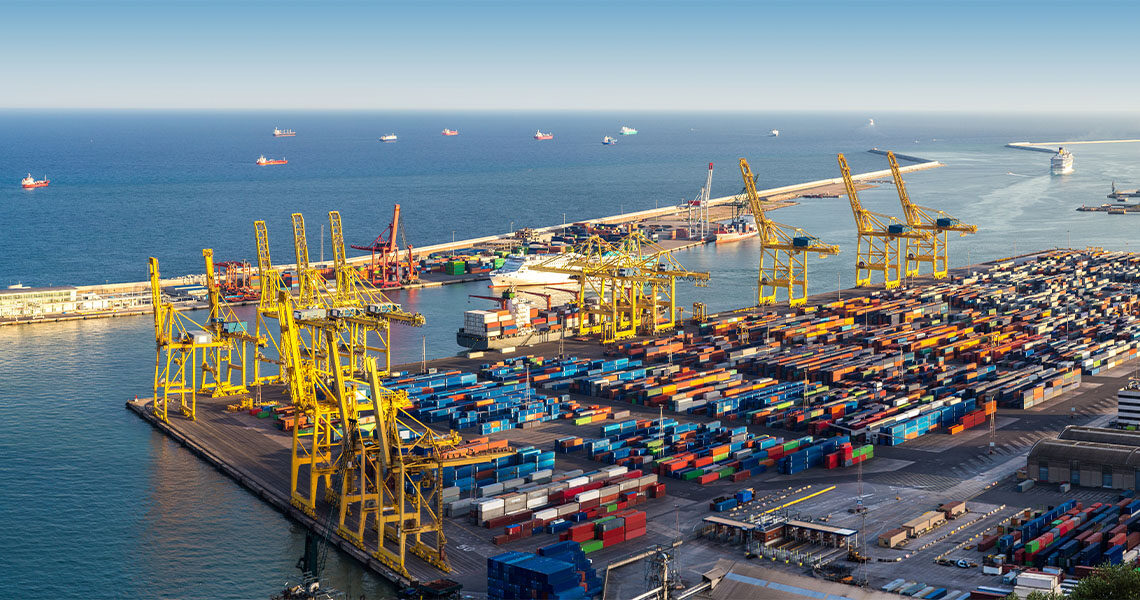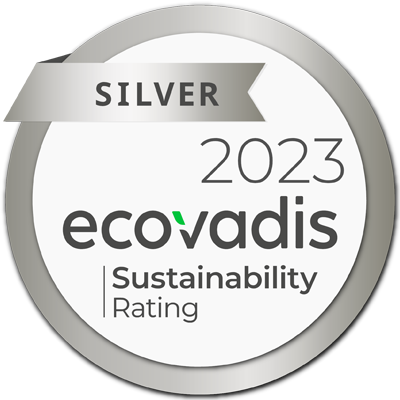Final Client: APM Terminals Barcelona
Client: Konecranes
Project: The Port of Barcelona’s Muelle Sur Container Terminal, (former Barcelona Port Authority, Terminal Catalunya S.A – TERCAT).
Where: Location: Barcelona, Spain
Type: Medium Voltage Rubber Insulated and Sheathed Drum Reeling Cables
Speed: 300m/m
Tratos & APM Terminals Barcelona cooperation
Konecranes has awarded cable manufacturer and supplier Tratos the contract to supply medium voltage rubber insulated and sheathed drum reeling cables for its Automated Stacking Cranes (ASC), to be used at the new Muelle Prat container terminal in Spain.
Following the takeover of the Muelle Prat container terminal from the Barcelona Port Authority, Terminal Catalunya S.A (TERCAT) – a member of the Hutchison Port Holdings (HPH) Group – has started construction of a new 1,000-metre-long quay featuring 18 container stacking blocks with 36 one-over-five ASCs.
The ASCs will be supplied by Konecranes with Tratosflex cable, which has been specifically designed for high-speed reeling. Tratosflex features a unique internal cable design, with the structure tightened against the internal relative movement. This prevents the cable from twisting and leading to possible breakage – extremely dangerous when reeling at speeds up to 300m/m. As a result of this sophisticated, reliable design, Konecranes now regularly specifies Tratosflex cable for its ASCs worldwide.
The first Muelle Prat berth is expected to commence commercial operations in late 2011/early 2012 after a short period of testing and commissioning of the container handling equipment and the terminal operating system. It is expected to have an annual handling capacity of 1.5 million TEU.
APM Terminals Barcelona
The Port of Barcelona’s Muelle Sur Container Terminal is 100% owned by APM Terminals and has an annual throughput capacity of 2.3 million TEU. APM Terminals Barcelona is located on the Mediterranean Coast in the Catalan Region of Spain, in Barcelona, Spain’s second-largest city.
Barcelona’s hinterland accounts for 80% of the ports total cargo volume. A large variety of industries are located in the hinterland, including automotive, textile, chemical and pharmaceuticals. It is benefits from close proximity to the ZAL – Logistics Activities Zone – and the duty-free area, Consorcio de la Zona Franca. Leading international brands including Ikea, Decathlon, Lidl, Amazon, Schneider Electric, Honda Logistics, Inditex, and Mango have also located their distribution centers in Barcelona.
The terminal has the benefit of being located on the entrance canal to the port. It has its own on-dock rail connection, immediate access to the motorway network and automated gate access for optimum intermodal efficiency. Customs offices are also located inside the terminal to optimise the logistics process.
APM Terminals Barcelona offer direct connections to inland container terminals in Zaragoza and Madrid using dedicated shuttle trains. These are ideally positioned close to the distributions centres of large multinationals. This service provides a number of benefits and cost savings, particularly for textiles, export scrap and Spanish agricultural products. The terminals can also arrange door-to-door service.
In 2015 APM Terminals Barcelona obtained OEA status for Protection and Security. Full OEA status was granted to the terminal in 2020, when it received the Authorised Economic Operator (OEA) certificate for Customs Procedures.
OEA status brings a number of benefits for customers, such as simplified customs procedures, fewer physical and document-based controls, and priority treatment if selected for control. AEO status also means that the controls the terminals has in place reduce theft and losses, results in fewer delayed shipments; improved planning; improved customer service and lower inspection costs of suppliers.
Did you know?
The terminal is equipped with the most advanced technology in order to maximize the handling of containers and operate as efficiently as possible. Our automated gates handle over 2,000 truck operations per day using Optical Character Recognition (OCR) for maximum efficiency.
- Wharf: 1,515m
- Draft: 16m
- LOA: 400m
- Yard: 81 ha
- Reefer plugs: 632 (380V/50 Hz)
- Annual capacity: 2.3 million TEU
- Cranes: 4 Panamax/ 5 Post Panamax/ 5 Super Post Panamax
- Outreach: 13/18/23 rows
- Gate lanes: 8 in/5 out
The terminal adheres to the highest international quality and safety standards including:
- ISO 9001:2015
- OHSAS 18001: 2007
- ISO 14001: 2015
- Regulation 1221/2009 of the European Parliament for Loading/Unloading Containers
- Port of Barcelona Efficiency Excellence
Tratos supports sustainable developments of ports infrastructure
Tratos is very pleased to supply its high-quality cables to the ports around the world. In doing so, Tratos supports the global endeavours of port authorities in upgrading and improving their operational capabilities, which contributes to the sustainable development of ports and achieving the 17 UN Global Goals.
With this project Tratos has supported:
#Envision2030 Goal 3: Good Health and Well-being
By 2030, substantially reduce the number of deaths and illnesses from hazardous chemicals and air, water and soil pollution and contamination
#Envision2030 Goal 8: Decent Work and Economic Growth
- Achieve higher levels of economic productivity through diversification, technological upgrading and innovation, including through a focus on high-value added and labour-intensive sectors
- Improve progressively, through 2030, global resource efficiency in consumption and production and endeavour to decouple economic growth from environmental degradation, in accordance with the 10-year framework of programmes on sustainable consumption and production, with developed countries taking the lead
#Envision2030 Goal 11: Sustainable Cities and Communities
- By 2030, significantly reduce the number of deaths and the number of people affected and substantially decrease the direct economic losses relative to global gross domestic product caused by disasters, including water-related disasters, with a focus on protecting the poor and people in vulnerable situations
#Envision2030 Goal 14: Life Below Water
Targets
- By 2025, prevent and significantly reduce marine pollution of all kinds, in particular from land-based activities, including marine debris and nutrient pollution
- Minimize and address the impacts of ocean acidification, including through enhanced scientific cooperation at all levels










